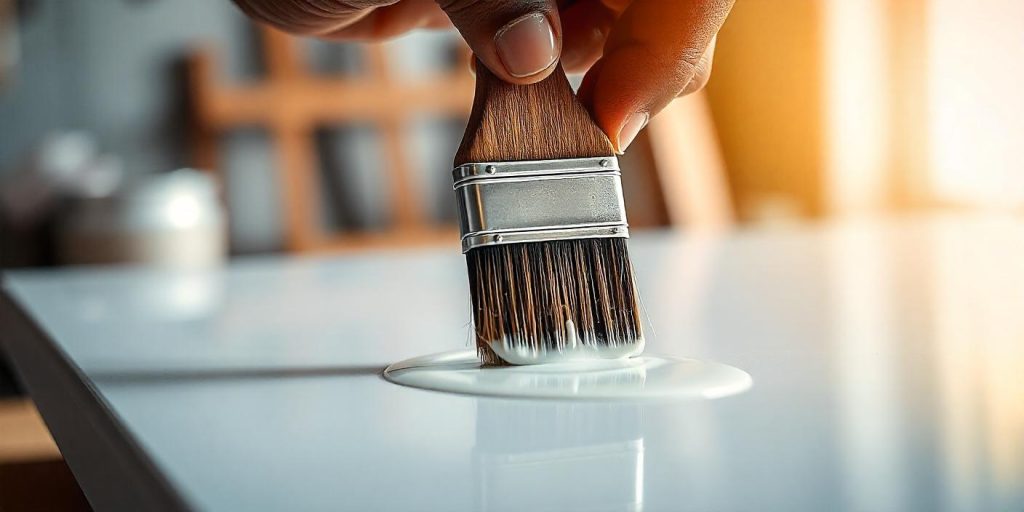Fiberglass is a versatile material commonly used in boats, cars, furniture, and more due to its durability and lightweight properties.

However, painting fiberglass requires specific preparation and techniques to ensure a smooth and long-lasting finish.
This comprehensive guide will walk you through the steps to properly paint fiberglass.
Contents
- Tools and Materials Needed
- Step 1: Clean the Surface Thoroughly
- Step 2: Repair Any Damage
- Step 3: Sand the Surface
- Step 4: Mask Off the Area
- Step 5: Apply the Primer
- Step 6: Paint the Fiberglass
- Step 7: Apply a Clear Coat (Optional)
- Tips for a Professional Finish
- Common Mistakes to Avoid
- Maintenance Tips for Painted Fiberglass
- Conclusion
Tools and Materials Needed
Before starting, gather the following tools and materials to make the process seamless:
1. Cleaning Supplies
- Dish soap or degreaser
- Clean rags or sponges
2. Sanding Tools
- Sandpaper (grits 80, 150, 220)
- Sanding block or electric sander
3. Masking Supplies
- Painter’s tape
- Plastic sheeting or drop cloths
4. Primer and Paint
- Fiberglass primer
- Paint (acrylic, polyurethane, or epoxy-based)
- Paint thinner (if needed)
5. Application Tools
- Paintbrushes
- Foam rollers
- Spray gun (optional)
6. Safety Equipment
- Gloves
- Safety goggles
- Respirator mask
Step 1: Clean the Surface Thoroughly
Remove Dirt and Grime
Begin by cleaning the fiberglass surface with dish soap or a degreaser. This step removes oils, dirt, and other contaminants that can interfere with paint adhesion.
Rinse and Dry
Rinse the surface thoroughly with clean water and let it dry completely. Any residual moisture can prevent the primer and paint from adhering properly.
Step 2: Repair Any Damage
Inspect for Cracks or Holes
Check the fiberglass for cracks, chips, or holes. These imperfections must be repaired before painting to ensure a smooth finish.
Use Fiberglass Repair Kit
Fill any cracks or holes with a fiberglass repair compound. Follow the manufacturer’s instructions for application and curing.
Step 3: Sand the Surface
Why Sanding is Important
Sanding helps remove the glossy finish on fiberglass, creating a rough surface for the primer to adhere to.
Sanding Steps
- Start with 80-grit sandpaper to remove the glossy layer.
- Switch to 150-grit sandpaper to smooth out the surface.
- Finish with 220-grit sandpaper for a fine, even texture.
Clean the Dust
After sanding, wipe the surface with a damp cloth to remove dust. Allow it to dry completely.
Step 4: Mask Off the Area
Protect Surrounding Areas
Use painter’s tape to mask off any areas you don’t want to paint. Cover larger sections with plastic sheeting or drop cloths.
Step 5: Apply the Primer
Choose the Right Primer
Use a fiberglass-compatible primer, such as epoxy or urethane-based primers, for optimal adhesion.
Apply the Primer
- Use a paintbrush, roller, or spray gun to apply an even coat of primer.
- Allow the primer to dry according to the manufacturer’s instructions.
Sand the Primer
Once dry, sand the primed surface lightly with 220-grit sandpaper to remove any imperfections. Wipe away dust with a clean cloth.
Step 6: Paint the Fiberglass
Select the Appropriate Paint
Choose a high-quality paint compatible with fiberglass, such as acrylic, polyurethane, or epoxy-based paint.
First Coat
- Apply the first coat of paint using a paintbrush, foam roller, or spray gun.
- Work in even, overlapping strokes to avoid streaks.
Let It Dry
Allow the paint to dry completely before applying additional coats. Follow the drying time recommended on the paint label.
Additional Coats
Apply 2–3 coats of paint for the best coverage, sanding lightly between each coat with 220-grit sandpaper.
Step 7: Apply a Clear Coat (Optional)
Why Use a Clear Coat
A clear coat provides extra protection and enhances the gloss of the painted surface.
Application
- Apply a clear coat using the same method as the paint.
- Allow it to dry and cure according to the manufacturer’s instructions.
Tips for a Professional Finish
Use a Spray Gun for Even Application
A spray gun provides a smooth and even finish, especially for large fiberglass surfaces.
Work in a Well-Ventilated Area
Painting fiberglass produces fumes, so ensure you’re working in a space with good ventilation.
Maintain Consistent Strokes
For a uniform appearance, maintain consistent pressure and motion when applying paint.
Common Mistakes to Avoid
Skipping the Primer
Primer is essential for proper paint adhesion. Skipping this step can lead to peeling or chipping.
Rushing the Drying Process
Allow each coat to dry fully before applying the next to prevent uneven textures and streaks.
Using the Wrong Paint
Ensure the paint is compatible with fiberglass to avoid poor adhesion or a short lifespan.
Maintenance Tips for Painted Fiberglass
Regular Cleaning
Clean the painted surface with mild soap and water to maintain its appearance.
Avoid Abrasive Materials
Use soft cloths or sponges to prevent scratching the paint.
Reapply Clear Coat
If the clear coat shows signs of wear, reapply it to protect the paint.
Conclusion
Painting fiberglass may seem intimidating, but with the right preparation and techniques, you can achieve a professional-quality finish. From cleaning and sanding to priming and painting, each step plays a crucial role in the process.
By following this guide, you’ll be able to transform your fiberglass surface with a durable and beautiful coat of paint that lasts for years.
